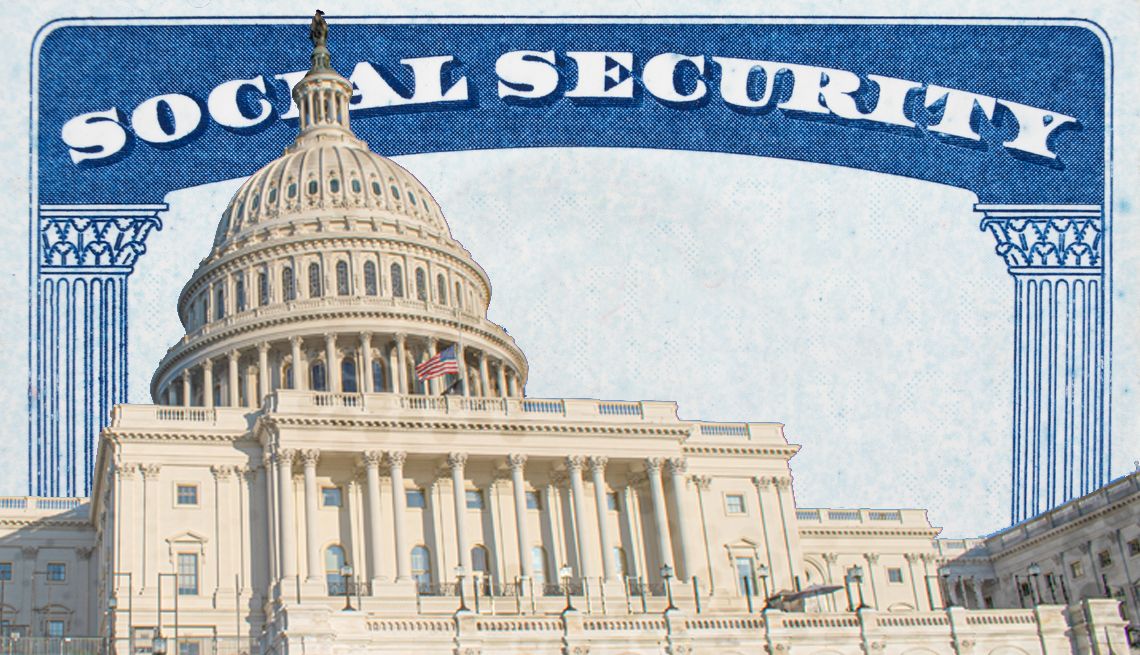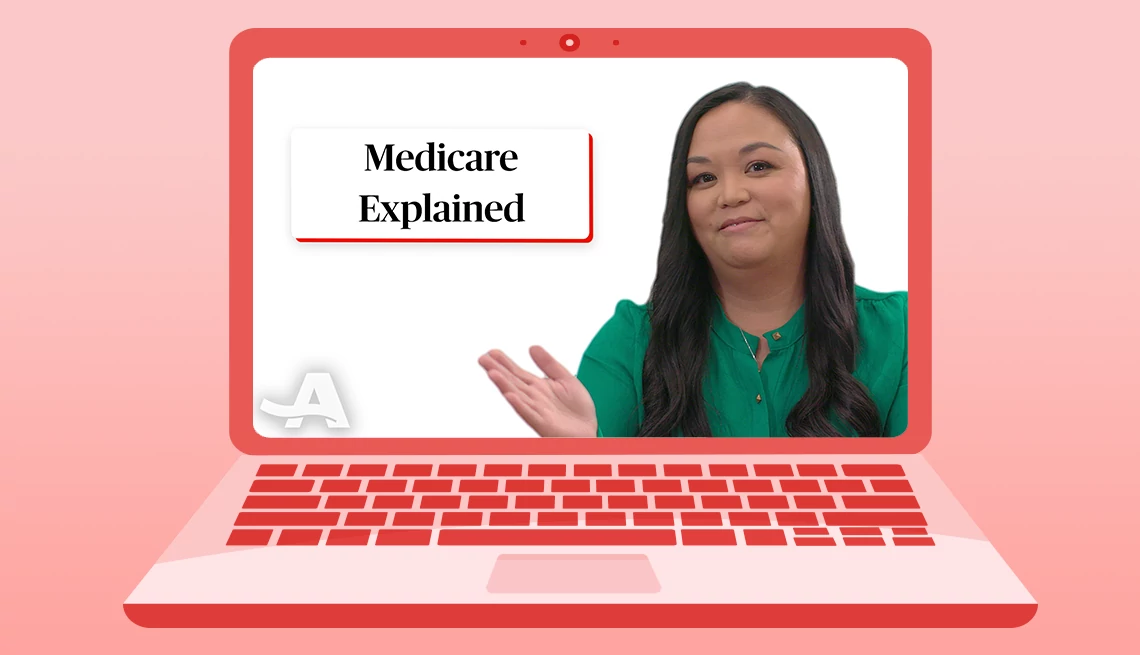AARP Eye Center
- AARP Online Community
- Games
- Games Talk
- SongTheme
- Games Tips
- Leave a Game Tip
- Ask for a Game Tip
- AARP Rewards
- AARP Rewards Connect
- Earn Activities
- Redemption
- AARP Rewards Tips
- Ask for a Rewards Tip
- Leave a Rewards Tip
- Help
- Membership
- Benefits & Discounts
- General Help
- Caregiving
- Caregiving
- Grief & Loss
- Caregiving Tips
- Ask for a Caregiving Tip
- Leave a Caregiving Tip
- Entertainment Forums
- Rock N' Roll
- Leisure & Lifestyle
- Health Forums
- Brain Health
- Healthy Living
- Medicare & Insurance
- Health Tips
- Ask for a Health Tip
- Leave a Health Tip
- Home & Family Forums
- Friends & Family
- Introduce Yourself
- Our Front Porch
- Money Forums
- Budget & Savings
- Scams & Fraud
- Retirement Forum
- Retirement
- Social Security
- Technology Forums
- Computer Questions & Tips
- Travel Forums
- Destinations
- Work & Jobs
- Work & Jobs
- AARP Online Community
- Retirement Forum
- Social Security
- Re: social security going broke?
social security going broke?
- Subscribe to RSS Feed
- Mark Topic as New
- Mark Topic as Read
- Float this Topic for Current User
- Bookmark
- Subscribe
- Printer Friendly Page
social security going broke?
Why doesn't the government do something NOW to keep social security solvent now and for many more years? This comes up every year like it is a scare tactic. I have heard that the government has "borrowed" money from this fund to pay other costs' I think its time to do a major overhaul of the system eliminating a point where the wealthy only pay the same into it as someone that makes quite a bit less. So, lets take the cap off and allow the young people to opt in or save on their own. Lets quit kicking the can down the road!
- Mark as New
- Bookmark
- Subscribe
- Mute
- Subscribe to RSS Feed
- Permalink
- Report
https://www.ssa.gov/policy/docs/ssb/v75n1/v75n1p1.html Here is the link to the SS article. I hope it will open. I have been getting auto save messages after just minutes on a posting. Sometimes I can retrieve my posting and sometimes it is lost. I don't know if it is AARP, my computer, or just me typing to slow.
- Mark as New
- Bookmark
- Subscribe
- Mute
- Subscribe to RSS Feed
- Permalink
- Report
I am providing a link to an article entitled SS Trust Fund Cash Flows and Reserves which is SS Bulletin, Vol 75, No 1, 2015. It is a lengthy article, but worthwhile reading inasmuch as it addresses how surplus Old Age Survivor Disability Income (OASDI) funds are essentially loaned to the federal government. The Social Security Act provides that the funds are maintained on the books of the Treasury. The fifth paragraph of the Introduction section describes how Special Issue Treasury Securities are issued to record surplus OASDI funds which are, in effect, loans to the federal government. This accumulating and redeeming of Special Issue Treasury Securities goes on daily as a standard operating procedure. The third section, Cash Flow During the Year, describes this operation in more detail. The point is that the federal government does not follow a loan application procedure such as we would applying for a loan or mortgage. By the way, the Special Issue Treasury Securities are not marketable securities such as other Treasury Bills, Notes, or Bonds. In other words, they are not subject to market fluctuations. It is probably the best guarantee you will find, However, current interest rates are low.
- Mark as New
- Bookmark
- Subscribe
- Mute
- Subscribe to RSS Feed
- Permalink
- Report
That is the way it was set up for SS Trust fund to loan money to the Fed. govt. It is a win win for all. SS gets some income on its funds and govt. get a good rate for what it borrows. The rate is defined by law. This has nothing to do with the fund running out of money and is a good reading if you like that type of reading.
- Mark as New
- Bookmark
- Subscribe
- Mute
- Subscribe to RSS Feed
- Permalink
- Report
@john258 There are several factors that affect the depletion of the SS Trust. Obviously, the Labor Participation Rate is probably the most important. We are at a dismal 61% to 62%. Based on an average pay of approximately $50 K per year,this needs to be at least 65% or more which will provide enough FICA contributions to cover our current SS benefit payroll of approximately $1 Trillion. Currently, FICA contributions are less than payroll. So, the SS Benefit Program needs to use all the interest that the SS Trust earns and the Federal Income Taxes (FIT) that more and more SS beneficiaries pay each year to make payroll. Some need to report up to 85% of their SS benefits as taxable income. Also, I believe for 2021, the SS Trust will need to start depleting the $2.9 Trillion Trust. The Actuary projects the Old Age Trust will be depleted by 2033. It is complicated and Congress has not developed a possible solution. With regard to interest on the SS Trust, I suggest you carefully read the section entitles, Social Security and the Treasury. Paragraph 13 of this section informs us that the Treasury does not really pay interest in cash. The Treasury simply issues more Special Issue Securities to represent interest. In effect, the SS Trust is paying interest to itself. The Treasury is simply running up the amount they owe the SS Trust. Paragraph 16 of this Section informs us that if the Treasury had to sell Treasury Securities on the open market,it would cost the Treasury about $38 Million more. So, the bottom line is that the SS/Treasury Financial relationship is a win for the Treasury, but not si much for the SS Trust. I am adding a link https://www.treasurydirect.gov/govt/reports/pd/mspd/2021/opds092021.pdf that is a summary of the Treasury Debt which is about $29 Trillion. The non-marketable debt is about $6 Trillion of which the SS Trust is about $2.9 Trillion. Marketable debt is about $23 Trillion and pays greater interest depending on the time duration. Just for comparison, if the SS Trust earned just 1% more on its assets beginning 2001 when the total accumulated to $1,049,445,000,000 (call it $1 Trillion), the SS Trust would have received approximately $400,000,000,000 ($400 Billion) over the last 20 years. I don't know about you, but this is some serious money. It has subsidized other federal government programs at a cost to the SS Program which if we are both alive in 2033, it will cost us directly.
- Mark as New
- Bookmark
- Subscribe
- Mute
- Subscribe to RSS Feed
- Permalink
- Report
Nice long answer but it does not make sense when applied, and that applies often when one follows what they read in regs. The basis of SS funding is the current work force funds the program for current retires. That means few workers less money to the fund and most times results in a deficit. When SS was set up it was allowed to invest in fed. govt. only and has done that. It gets intrest and if the money it invests was needed to pay benefits it would not invest. Money would be paid in to the the trust fund by the Fed. Govt. if SS needed it period.
Sadly one of the biggest problems today is that people do not understand how the entire program works and try and make big problems out of non problems. The experts understand all the in and outs and they handle them. None of us do nor will we period. If one understands the over all program they will not have problems using the system. AARP has some good courses on SS.
- Mark as New
- Bookmark
- Subscribe
- Mute
- Subscribe to RSS Feed
- Permalink
- Report
These special treasuries held by the SSA and the Treasury are redeemed every month when they are needed to meet the benefits paid and this will escalate as time goes by - according to the latest 2021 Trustee Report. That's why some of these special SS treasuries are deemed to be short term
Social Security Trusts Funds - Special-issue securities
Look at it like this, john258 – This comes from the 2020 Trust Fund Data.
IN MILLIONS
| 2020 Income from Net payroll taxes (revenues) | 1, 001, 272 |
| 2020 Benefit Payments (paid out) | ( 1, 095, 924 ) |
| 2020 transfer to RRBP (paid out) | ( 4, 988 ) |
| 2020 Adm. Expenses (paid out) | ( 6, 303 ) |
| 2020 Amt SHORT of covering benefits & Adm. cost with ONLY payroll taxes | ( 105, 943 ) |
| 2020 Income from Taxation on Benefits | 40, 736 |
| 2020 Interest from Special Treasuries | 76, 085 |
| 2020 Income from Gen Fund reimb | 3 |
| 2020 Trust Fund Increase for Year but ONLY FROM Taxation of Benefits & Special Treasury Interest | 10, 881 |
So as you see here – there is NO need for the purchase of
Any long term special treasuries cause the trust fund did not have any
excessive payroll Taxes over benefits paid out to invest in these type special treasures
That's why the Center on Budget and Policy Priorities came to this conclusion in September 2021 -
Following the bipartisan Social Security financing deal in 1983, Social Security ran a surplus every year until 2021. Starting in 2021, Social Security’s total cost exceeds its total income. However, the trust funds’ reserves will supplement the program’s income — from payroll taxes, income taxes on benefits paid to higher-income beneficiaries, and interest earned on the trust funds’ bonds — to enable Social Security to keep paying full benefits until 2034.
It's that end date (currently projected to be 2034) when the SS program would be deemed by law to be "insolvent" and in that regard, current benefits would be reduced by about 20-22% so that all beneficiaries at that time could share the (what's left ) bounty.
The asset reserve at the end of 2020 was 2,908,286 - That is almost 3 TRILLION dollars BUT it is going to start fading fast - because income compared to benefits from payroll taxes is going down - look at the Trust Fund Data chart.
The Trust Fund won't last just by these other sources of income - from the taxation of benefits and the interest from these special treasuries and a miniscule amount from reimbursements from the general fund.
EVERY year since 2009, the annual SS Trustee Reports have told us in their annual report the very same thing - and the dates of insolvency have only varied by a year of so - 2034 +/-
2021 Social Security Trustee Report Summary
Conclusion
Lawmakers have many policy options that would reduce or eliminate the long-term financing shortfalls in Social Security and Medicare. Lawmakers should address these financial challenges as soon as possible. Taking action sooner rather than later will permit consideration of a broader range of solutions and provide more time to phase in changes so that the public has adequate time to prepare.
signed by: (the Trustees):
- Janet Yellen, Secretary of the Treasury and Managing Trustee of the Trust Funds.
- Xavier Becerra, Secretary of Health and Human Services, and Trustee.
- Martin J. Walsh, Secretary of Labor, and Trustee.
- Kilolo Kijakazi, Acting Commissioner of Social Security, and Trustee.
- Mark as New
- Bookmark
- Subscribe
- Mute
- Subscribe to RSS Feed
- Permalink
- Report
@GailL1 You have provided pertinent info and the details to the complex SS Program. I will add another piece of detail regarding the investment side of the Trust. If you have already added it in another posting, please disregard. As you know, the SS Trust Funds are financial Accounts in the Treasury. The Treasury uses the Federal Reserve Bank of New York and several other commercial banks to handle their accounts. I am guessing that Goldman Sachs and JP Morgan may be involved as well. This is why your electronic entry on your bank statement indicates a credit from SSA/Treasury. Here is the link https://www.ssa.gov/cgi-bin/transactions.cgi If I linked it correctly, you will see Trust investment activity for 2021 thru September. Please note that the Treasury invests all FICA contributions daily in Special Issue Certificates. As you may imagine, there are literally hundreds, if not thousands, of payroll systems transferring FICA contributions to the Treasury daily either electronically or manual check (small employers). Those FICA contributions are immediately invested in Special Issue Certificates (1 year duration). There is a hierarchy that the Treasury uses for redeeming Special Issue Certificates and Special Issue Bonds (collectively known as Special Issue Treasury Securities). In another posting, I referred to them as SITS. The Treasury determines what Certificates and/or Bonds (SITS) to redeem to obtain the appropriate amount of cash to pay SS benefits which are issued on various dates throughout the month. Because the SITS are non-marketable, there isn't any market risk. In other words, the values of the SITS will not change due to changes in current interest rates. That is the Treasury guarantee. The issue that the Treasury needs to address is whether or not the Treasury needs to sell marketable securities (bills, note, bonds, etc.) to raise cash to redeem the SITS in order to pay SS benefits. There are many buyers of marketable Treasury securities domestic and foreign, That is not the problem. It is the debt limit. We recently reached that level and that would have prevented the Treasury from paying SS benefits. Congress approved a temporary extension. If I linked the Trust fund data correctly, you will see month by month investment activity. However, it is compiled for the month inasmuch as there isn't enough space to record all daily transactions. Take a look at June when the Special Issue Bonds mature. The Treasury laddered the proceeds from maturing Bonds annually to 2033.
- Mark as New
- Bookmark
- Subscribe
- Mute
- Subscribe to RSS Feed
- Permalink
- Report
@john258 It is clear that you either did not read the third section, Cash Flow During The Year, or read that section and did not comprehend the information. Simply, all FICA contributions are paid to the Treasury not to Social Security. The Treasury manages the cash flow. Each day, the Treasury immediately allocates this revenue (FICA contributions) to Special Issue Treasury Securities (SITS). The Treasury redeems older SITS to pay benefits. This design ensures that FICA contributions are always invested. Many folks believe that this money which is invested in SITS earns cash interest. It does not. The Treasury calculates the amount of interest earned and issues a SITS in that amount. Otherwise, the Treasury would need to sell marketable Treasury securities such as Bills, Notes, Bonds, etc. to raise the required amount of cash. As you may not be aware, in 2020, the Federal Government collected about $3.42 Trillion and spent about $6.55 Trillion. The Feds cover the shortfall by selling marketable Treasury securities. To date, the deficit sits around $29 Trillion. If you watch any of the News stations on TV, you will hear about increasing the deficit. We are tapped out. We have reached our credit card limits. Congress has approved a short term solution until December and it will need to be addressed again. At any rate, to eliminate the need to sell marketable Treasury securities to pay interest, the Treasury issues a SITS in the amount of interest due. In my prior reply, I inadvertently typed $38 Million instead of $38 Billion in the example the SS Bulletin article used to illustrate the difference in cost to the Treasury which is bore by the SS Trust. I am including a link that provides pertinent data regarding the SS Trust and how the Surplus has increased and decreased over time. It is interesting that FICA contributions appear to always increase from year to year even with fewer workers per SS beneficiaries. It may be the result of more aggregate workers inasmuch as our population has continued to grow. However, the number of SS beneficiaries has grown as well; and, perhaps at a greater ratio starting in 2008 when the folks born in 1946 and after started to receive their SS benefits. It has been stated that as many as 10,000 boomers retire each day. The Surplus has accumulated since 1982 (when it was just about $25 Billion) to about $2.1 Trillion in 2008.https://www.ssa.gov/oact/STATS/table4a3.html#cost
- Mark as New
- Bookmark
- Subscribe
- Mute
- Subscribe to RSS Feed
- Permalink
- Report
I quickly read it and in the overall understanding of SS means nothing. It is how the govt functions in handling SS. Good money is handled by Treasury saves double effort. THE FACT IS IT IS SS MONEY. THE GOVT USES IT AND PAYS INTEREST TO SS FOR DOING THAT. That is what I said before. SS is complex and the experts know all the operational details so the rest of us can learn the over all picture and how to handle SS. Think of it as a TV set. We know how to operate it but have not a clue how the chips, and other parts interact to make it work. The same s true of SS. You can read all the details but still not understand how it works. We need to understand how the program in its entirety works to understand the program. None of us will ever understand how the inter workings perform no matter how much we read.
- Mark as New
- Bookmark
- Subscribe
- Mute
- Subscribe to RSS Feed
- Permalink
- Report
Yep, the shortfall has a lot to do with the Ratio of Covered Workers to Beneficiaries because this is where the MAIN funding comes from - workers and employer contributions. AND the number of workers to number of beneficiaries is declining.



this is as far as the data was shown on the SS History website. I had to cut and paste in sections but you can see the whole thing at the link I posted.
- Mark as New
- Bookmark
- Subscribe
- Mute
- Subscribe to RSS Feed
- Permalink
- Report
The Federal government doesn't actually borrow money from the SS Trust Fund. For any amount accumulated in the SS Trust Fund, meaning those funds that aren't paid out readily for benefits or administration of the program, the SS Trust Fund invest these accumulated funds in special U.S. Treasuries.
About Social Security Special-Issue Securities
U.S. Treasuries are securities that are issued by the United States government that which allow it to raise money to help cover the costs of operations and fund programs. These Treasuries are sold to investors, who are generally looking for the safest, lowest-risk investment available. U.S. Treasuries are owned by many entities - banks, countries, our various Trust Funds that have any accumulation of funds.
In this case, the SS Trust Fund is just another investor in the U.S. Government except the SS Trust Fund is special in it's hierarchy of who gets special consideration if something were to happen. The SS Trust Fund now ONLY receives these special securities. The U.S. Government pay the SS Trust Fund interest on these securities and this interest also helps to keep the SS program funded - So now ONLY the Federal Government owns these special SS Trust Fund Treasury securities
The revenue sources for the SS Trust Fund are
- payroll % contributions on earned income by employees and matched by employers
- taxes paid by SS beneficiaries on their benefits if they meet the income criteria for paying these taxes
- interest from the government for these US "special" Treasures
Here are the balance sheets if you want to take a look - from 1957 - 2020
Here's a look at the rate of interest the SS Trust Fund has received through the years
About the Social Security Interest Rates
Social Security Nominal Interest Rates On Special Issues 2000 - 2021 (thru October 2021)
So if you believe in the "full faith and strength" of the U.S. Government and you want these accumulated SS Trust Funds in a safe investment - this is the only way that it can be done.
- Mark as New
- Bookmark
- Subscribe
- Mute
- Subscribe to RSS Feed
- Permalink
- Report
The Government calls them "investments"
Social Security Trust Funds - Investment Holdings
Who am I to dispute their terminology.
But going by your thought process - Would the interest we pay to say, China or Banks on Treasuries they own be considered interest paid on a debt or on an investment?
I am just playing the devil here, john258 - I know exactly what you mean by your statement. 🤣
- Mark as New
- Bookmark
- Subscribe
- Mute
- Subscribe to RSS Feed
- Permalink
- Report
What we pay China on Treasuries is internist and Treasuries China buys debt. Treasuries are sold to finance our debt normally, but can be sold to get money for a project when they are then usually called Bonds.
Allows for long back and forth between people who really do not understand the full subject.
- Mark as New
- Bookmark
- Subscribe
- Mute
- Subscribe to RSS Feed
- Permalink
- Report
The govt borrows money from this fund all the time and has been doing that for years. The govt. pays the fund intrest on the money it borrows. The program is designed so the fund will always need more money as there are fewer paying into it.
AARP has some good courses on SS and all need to understand SS so it can thrive.
"I downloaded AARP Perks to assist in staying connected and never missing out on a discount!" -LeeshaD341679

















)

























































